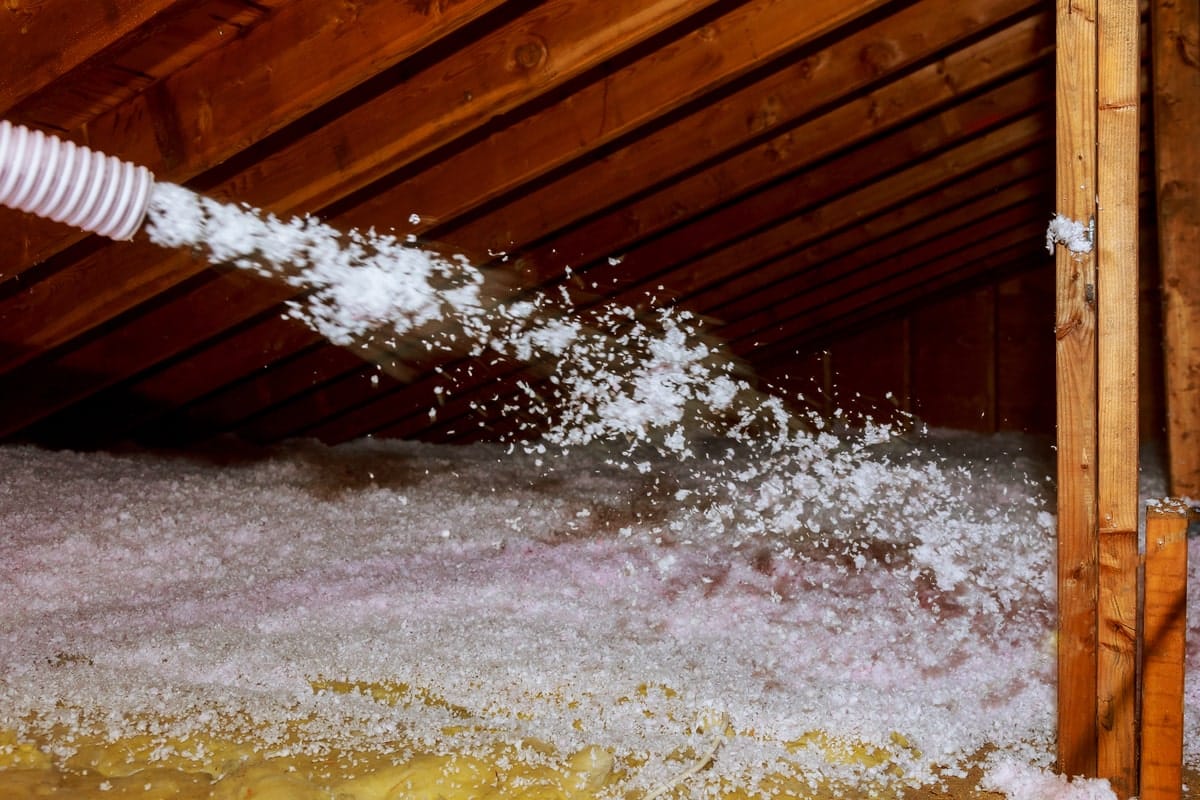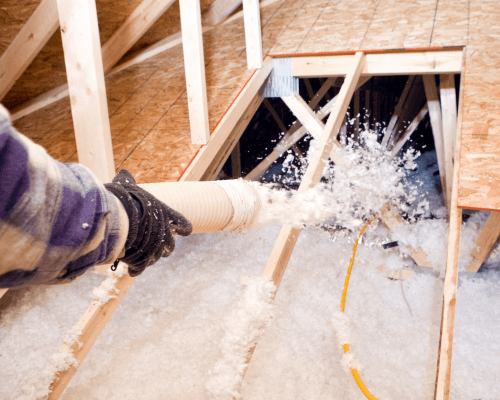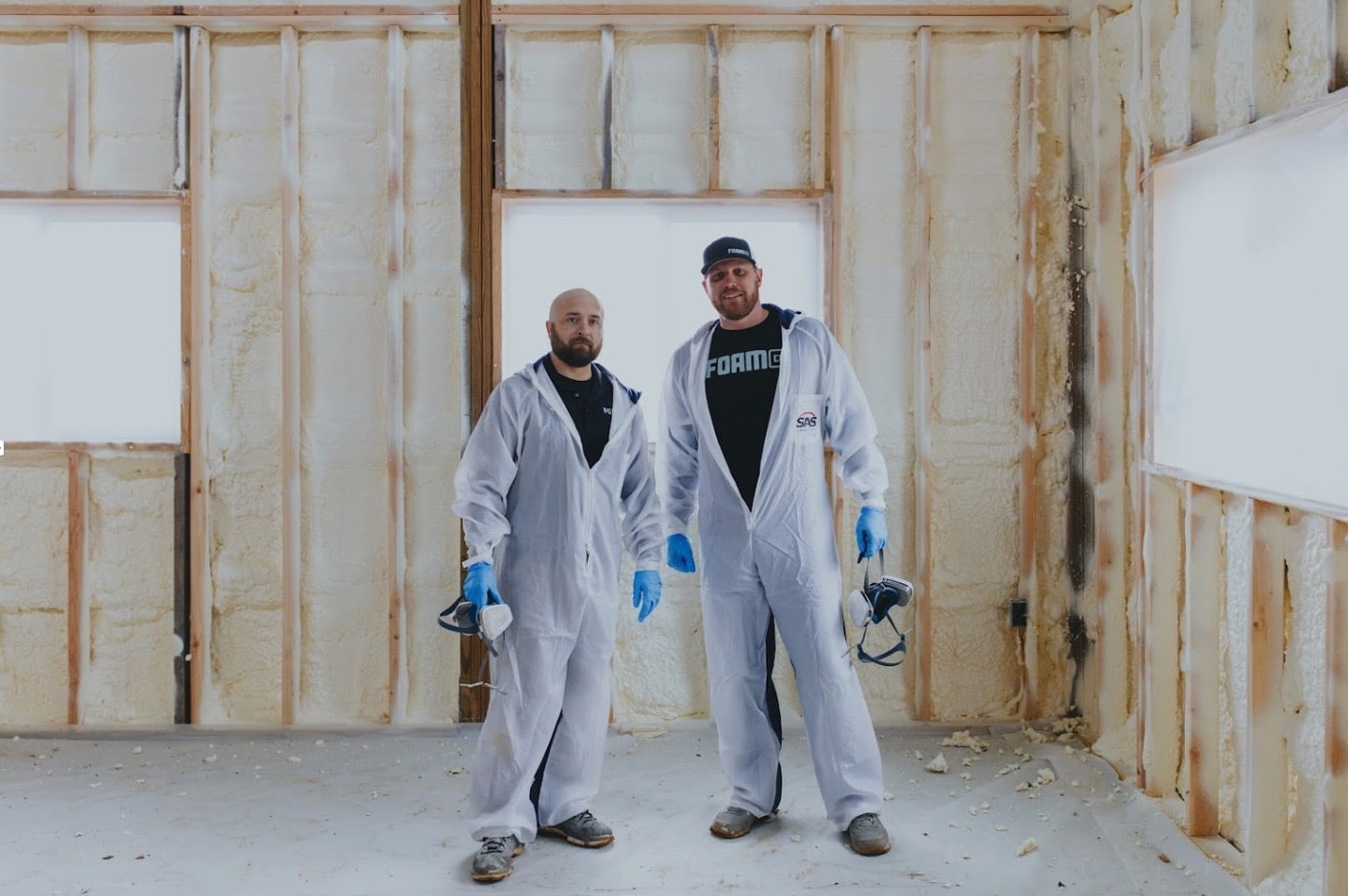Blow-in Insulation Services In St. Louis, Mo
Professional Insulation Services
Blow-in Insulation
Are you tired of constantly adjusting the thermostat, trying to achieve that perfect indoor temperature? Blow-in insulation might be the solution your home has been missing. At Foam Co, our professional insulation contractors employ cutting-edge techniques and high-quality materials to provide exceptional insulation services for your house.
Blow-in insulation is a popular choice among homeowners and businesses, offering superior energy efficiency and comfort. This type of insulation excels in filling gaps and sealing leaks, making your home more energy-efficient and reducing utility bills. Nowhere else can you experience the same level of comfort and cost savings as with blow-in insulation.
Our commitment to excellence ensures that every installation is performed with precision and care. We proudly serve St. Louis, MO and surrounding areas, such as St Peters, MO and Jackson, MO.

Schedule a free consultation
Trust in Foam Co’s spray foam insulation service and schedule your FREE consultation with our Foam Co crew!
What is Blow-in Insulation?
Blow-In insulation, also known as loose-fill insulation, involves the use of small particles of fiber, foam, or other materials that are blown into cavities and spaces within your home. It is commonly used in attics, walls, and other hard-to-reach areas where traditional batt insulation might not be effective.
The materials used for Blow-In insulation can vary, but the most common include:
- Cellulose: Made from recycled paper products and treated for fire resistance.
- Fiberglass: Composed of fine glass fibers.
- Mineral Wool: Made from natural minerals or industrial waste products.
Benefits of Blow-In Insulation
Superior Energy Efficiency
One of the main advantages of Blow-In insulation is its ability to provide excellent energy efficiency. By filling in gaps and covering areas thoroughly, it helps to maintain a consistent indoor temperature, reducing the need for heating and cooling systems to work overtime. This can lead to significant savings on energy bills.
Improved Comfort
By minimizing drafts and temperature fluctuations, Blow-In insulation enhances overall comfort within the home. It helps to keep your home warmer in the winter and cooler in the summer, creating a more pleasant living environment.
Noise Reduction
Blow-in insulation is a noise barrier in dampening sounds entering and leaving the house. It’s perfect for a busy neighborhood and in rooms inside the house that need soundproof, like a home office or a nursery.
Eco-Friendly Options
With materials like cellulose being made from recycled products, Blow-In insulation can be a more environmentally friendly choice compared to other insulation types. Additionally, its effectiveness in reducing energy consumption contributes to a lower carbon footprint.
Types of Blow-In Insulation Materials
Blow-in insulation offers a variety of materials, each with unique benefits to suit different needs. Here’s a closer look at the most popular options:

Blow-in Installation process
Initial Assessment: Our journey starts with a comprehensive evaluation. Our team will pinpoint the areas that need insulation, check for any existing insulation, and take precise measurements of the spaces. This step is crucial for creating a clear plan and ensuring we have the right materials for your home.
Preparing the Space: Before installation begins, we make sure everything is set up for a smooth process. This involves sealing any leaks or cracks, ensuring proper ventilation, and clearing away any debris or obstacles. Proper preparation is key to a successful installation.
Installation: Our skilled insulation contractors use specialized equipment to blow the insulation material into the targeted areas. The process includes:
- Loading the Material: Insulation material is placed into a blowing machine.
- Blowing the Insulation: The machine then blows the material through a hose, distributing it evenly into the designated spaces.
- Final Check: Installers ensure the insulation is evenly spread and reaches the necessary depth.
Post-Installation Inspection: After the installation, we conduct a thorough inspection to confirm the insulation is properly installed with no gaps or missed areas. This final step is essential for ensuring the insulation’s effectiveness and your home’s comfort.
How Blow-In Insulation Improves Energy Efficiency
Reducing Heat Loss
Blow-In insulation significantly reduces heat loss by filling gaps and covering areas that traditional insulation might miss. This is particularly important in attics and walls where heat loss can be substantial.
Enhancing HVAC Efficiency
By maintaining a more consistent indoor temperature, Blow-In insulation reduces the workload on your heating, ventilation, and air conditioning (HVAC) system. This not only lowers energy bills but also extends the lifespan of your HVAC system by preventing it from overworking.
Lowering Energy Bills
The combination of reduced heat loss and enhanced HVAC efficiency leads to lower energy bills. Homeowners can expect to see a noticeable decrease in their energy costs after installing Blow-In insulation.

Health and Safety Considerations
Fire Safety
Mineral wool and cellulose are two common blow-in insulation materials that have been prepared to withstand flames. This increases your home’s safety and lowers the possibility that a fire would spread.
Moisture Control
Properly installed Blow-In insulation can help control moisture levels within your home. Materials like mineral wool are resistant to moisture absorption, preventing mold and mildew growth.
Indoor Air Quality
The indoor air quality is guaranteed when Blow-In insulation is installed using safe, non-toxic materials. Additionally, a professional installation reduces the possibility of airborne dust and particle discharge throughout the procedure.
Common FAQs About Insulation Services
How often does insulation need to be replaced?
Insulation typically lasts 10 to 15 years, but it requires regular checks for optimal performance. The exact lifespan depends on the insulation type, quality, and your home conditions.



Will insulation installation save me money on energy bills?
Yes, correct insulation can reduce energy bills by making your home more energy-efficient. The savings depend on the insulation type, amount, your local climate, and your HVAC system’s efficiency. The EPA suggests that insulation and air sealing can cut home energy costs by about 15%.
What insulation types does Foam Co offer?
Foam Co provides a comprehensive range of insulation types, including Batt Roll Insulation, Dense Pack Insulation, Blow-In Insulation, and Spray Foam Insulation. You can find more details on each type on our Product page.
How do I choose the right insulation type for my home?
The choice depends on the space you’re insulating. Code for many Zone 4 climates recommends at least R-13 in walls and R-38 in the attic. However, adding air sealing and increasing the R-Value can offer better value. To make the best decision, consider scheduling a free home health visit with us.
How does insulation work?
Insulation works by slowing the flow of heat, which naturally moves from warmer to cooler areas. By reducing heat flow, your heating or cooling systems work less, maintaining desired temperatures more efficiently and saving you money.
How long will insulation installation take?
Generally, insulation installation is completed in one day, but the timeline can vary based on the size of the space being insulated. Be sure to contact us at 314.463.0888 to describe the size of your home and the space that you would like to address and we can schedule a complimentary consultation to fully educate you on the process.
What is the average cost of your service?
We prioritize transparency and affordability. The cost of our professional insulation services can vary significantly depending on your home’s specific needs and the type of insulation chosen. For an accurate estimate, consider scheduling a free home health visit with us.
How do I know if my insulation should be replaced?
Signs your insulation may need replacing include inconsistent room temperatures, unusually high energy bills, if the insulation was only installed to minimum code, or if it’s over 10 years old.
“I’m excited to see our energy bills go down and to be more comfortable in our house…”
Read More…
Cat B.
Customer

